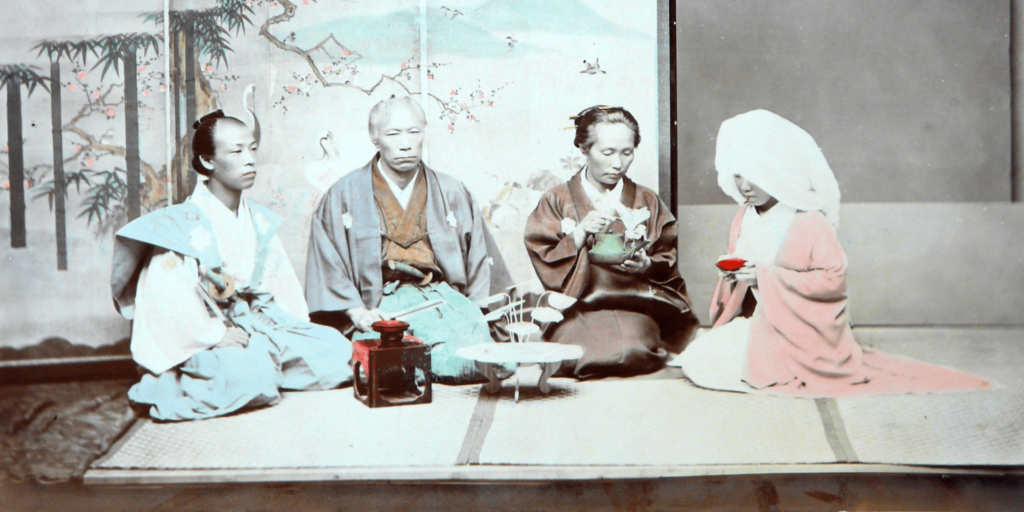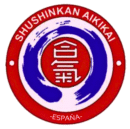THE HAKAMA
The hakama (袴) is a pair of long trousers with seven pleats or pleats (five in front and two more in the back), which is probably the most distinctive symbol of aikido, although it is also used in other martial arts such as kendo, iaido and kyudo.
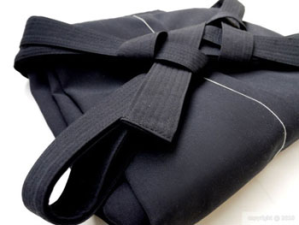
Originally made of thick fabric, its primary function was to protect the legs. Later, it became a symbol of status, clearly distinguishing a nobleman or a samurai, evolving toward lighter fabrics, often in dark colors (black, blue, gray).
Its current form was established during the Edo period (1603–1868), during which it was worn interchangeably by both women and men. There were also tubular, legless skirts and extremely long hakamas (around 5 meters) worn on visits to the shogun, hampering movement and reducing the risk of attacks on the shogun.
Currently, it is the practitioners of the aforementioned martial arts who keep alive the traditional use of the garment, a type called joba hakama, reserving it, in general, for those of higher rank, since there is no universal agreement on the matter (although O Sensei was clear: all practitioners should wear hakama).
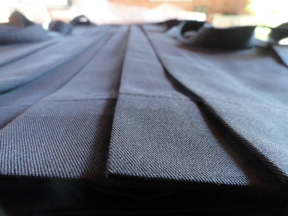
The hakama is attached to the body with four straps (himo): two long ones that come out from the sides of the front, and two shorter ones that start from the back, where there is a flexible piece called koshiita.

- Koshiita: Back reinforcement, panel of firm but flexible material.
- Himo: ribbons Mae-himo: long frontal ribbons (mae).
- Ushiro-himo: short rear straps (ushiro).
- Hida: folds.
- Ohida: posterior folds.
- Yosehida: Frontal folds.
It can be tied in various ways: the warrior knot (shin mushubi), the so-called common knot (jumonji mushubi), and others. There are no general agreements here either.
The seven folds have various symbolic interpretations. In Japanese Buddhist tradition, the folds represent the Five Elements (godai, literally the five great ones): water, earth, fire, wind, and emptiness, plus the duality of Yin and Yang.
The Buddhist philosophy of godai is known in the West thanks to the warrior Miyamoto Musashi (below), who in his book Gorin-no-sho (The Book of Five Rings) describes different aspects of samurai sword handling, assigning each one an element.
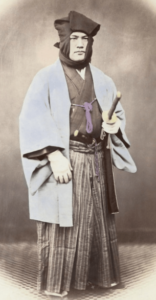
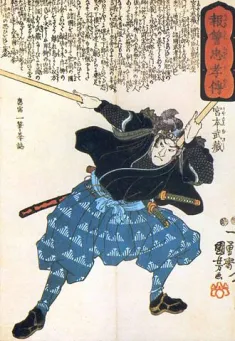
And according to the traditional interpretation of bushido, the way of the warrior, the folds represent the seven codes of the samurai:
- Yu: Courage, valor. You'll see people around you hiding, but don't hide; act when necessary, in an intelligent and strong way. Replace fear with respect and caution. Try to live fully.
- Jin: Benevolence, generosity. Show complete attention to others, no matter who they are. Be careful not to cause unnecessary pain or trouble, both to yourself and to others.
- Gi: Justice, integrity, rectitude. Be honest, respect yourself and others. Be true to your word and live up to your ideals. Try to discern between what is right and what is wrong; there are no shades of gray here.
- Rei: Etiquette, courtesy, respect. Courtesy expresses, through gestures and attitudes, a genuine interest in others. Dojo etiquette reflects this courtesy, an environment in which we interact with others in a pleasant and harmonious manner. You have no reason to be cruel, don't show off your strength. You will receive respect if you respect others.
- Makoto: Sincerity, honesty. Without sincerity, the practice of aikido is merely pretense or useless posturing. If you're not sincere in your work, you lie to yourself and impede others' progress. When you say you'll do something, do it. The commitment must be unequivocal, because deception doesn't last long in the face of the demands of others.
- Chuugi: Loyalty, fidelity. Be faithful to what others expect of you; don't betray the trust a comrade shows you. Your words and deeds should be your footprints: they always follow you, and others should find you following them.
- Meiyo: Honor, dignity. The samurai is the one who judges his own honor. Who is he really? It's a reflection of the decisions he makes and how he carries them out: he can't hide from himself. For an aikidoka, for a Westerner, what is honor? Perhaps it's related to the ability to be and do without betraying oneself. If so, it would become a path of self-knowledge: try to be yourself, try to be better. Don't let your own judgments confuse you.
There are several ways to fold the hakama after use. The intention is to keep it wrinkle-free, with well-defined folds and the ties tightly fastened. In reality, the ura (hidden) meaning of folding is to induce a serene, almost meditative moment before returning to the busy world. The care with which the practitioner treats their hakama can speak volumes about their emotional state.
We work in the keikogi (稽古着, training uniform) or aikidogi (着, gi, uniform). We buy it with enthusiasm at the beginning of our journey. But the hakama is something else; anyone who wears it will see that it works miracles: it improves the overall position, giving a sense of stability, helps focus attention on certain movements, the fixation of the straps stabilizes the waist and contributes to awareness of the movements of the hara, the position of the pelvis, not to mention the psychological factor of feeling like a true aikido practitioner. In a certain way, the hakama represents a link between the Western practitioner and traditional Japanese culture.
From an aesthetic point of view, or rather, if we consider the issue of ki perception, the flow of the fabric enhances the flow of movement, emphasizing the natural circularity of aikido movements: during a fall, our peripheral vision perceives the hakama unfolding like a fan, a sail, a wing. This aesthetic perception could be the gateway to a true source of consciousness.
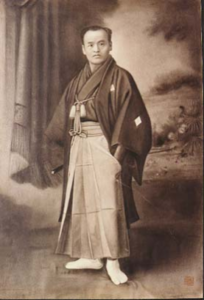
Let's not forget that the hakama was originally a sign of nobility. This aroma lingers in the practitioner as a sense of dignity, or responsibility; when one puts on the hakama, one doesn't move the same way as without it. The first day one puts on the hakama, one begins to be a different aikidoka.
If we allow the importance of the hakama to fade, perhaps we will begin to allow the fundamentals of the spirit of aikido to fall into oblivion as well.
Mitsugi Saotome, The Principles of Aikido.
How to tie a hakama. Mizu Aikido School
How to fold a hakama. Martial Fusion
